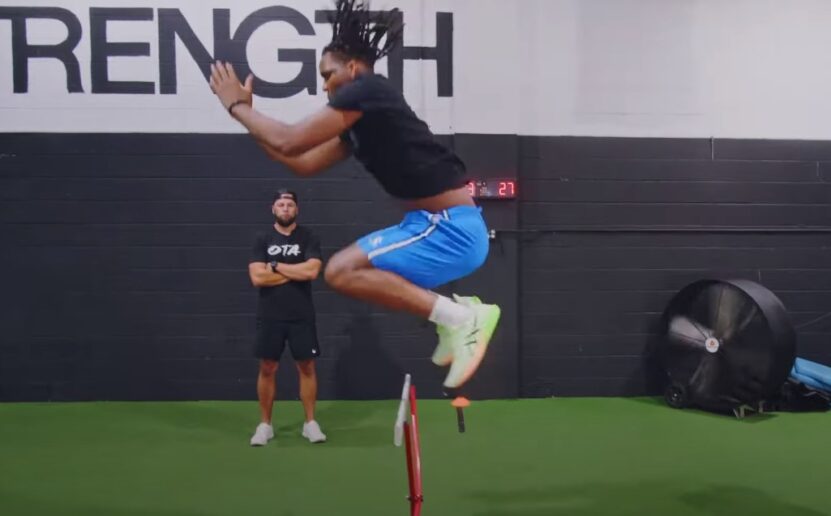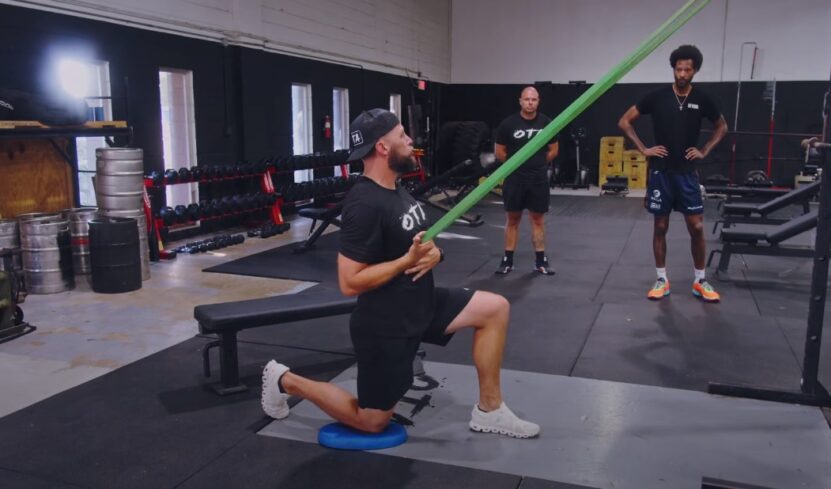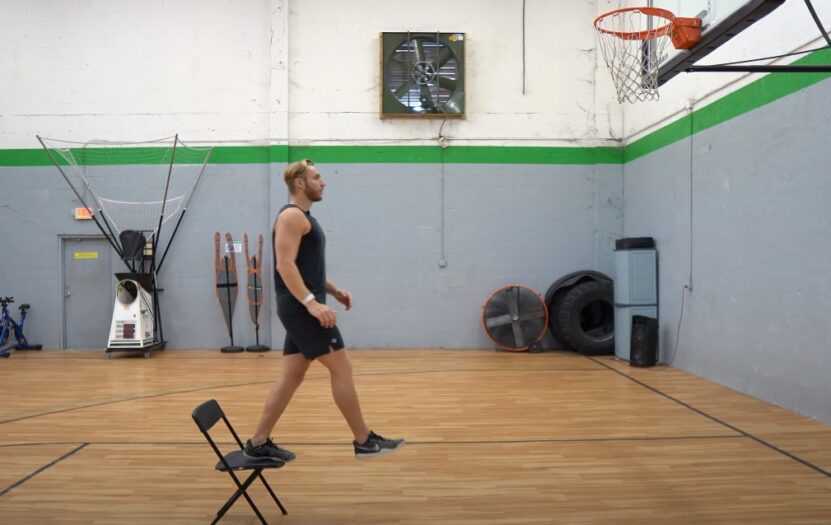Basketball is a dynamic sport requiring agility, strength, and speed. When I started playing, I quickly realized the importance of not just practicing shooting or dribbling but also focusing on physical fitness.
That’s when I discovered the magic of plyometric workouts. Let’s talk about why every basketball player, regardless of skill level, should incorporate plyometrics into their routine.
What Are Plyometric Workouts?
Plyometric exercises involve explosive movements to develop muscular power and speed. Think of box jumps, jump squats, and burpees – they all fall under the plyometric category.
The goal is to exert maximum force in short intervals, helping your muscles become more powerful and reactive.
1. Boosting Explosiveness
One of the most significant benefits I’ve noticed from plyometrics is the increase in explosiveness. When you’re playing basketball, the ability to jump higher and sprint faster can give you a substantial edge.
Plyometric workouts train your muscles to contract more quickly and forcefully, which translates to better performance on the court. For instance, when going for a rebound or driving towards the basket, that extra explosiveness can really give you a boost.
2. Improving Vertical Jump
Every basketball player dreams of soaring above the rim, and plyometrics can help make that dream a reality. Exercises like depth jumps and tuck jumps specifically target the muscles used in jumping. Over time, with consistent training, you’ll notice a significant improvement in your vertical leap.
Personally, after incorporating plyometric workouts into my routine, I was able to add a few inches to my jump, which really gave me that little extra on the defensive end of the ball.
3. Enhancing Agility and Coordination

Basketball requires more than just raw power; agility and coordination are crucial as well. Plyometric exercises often involve multi-directional movements, which can improve your ability to change directions quickly and maintain balance.
For example, lateral bounds or skater jumps help enhance side-to-side agility, making it easier to defend against fast opponents or navigate through a crowded paint area. As a defender, you’ll find yourself staying in front of the player you’re guarding much easier.
4. Building Endurance
Another benefit I’ve found with plyometric workouts is the improvement in overall endurance. Basketball games can be long and physically demanding. Plyometrics challenge your cardiovascular system, helping to build stamina.
Exercises like burpees and mountain climbers not only develop power but also push your heart rate, mimicking the high-intensity bursts of energy needed during a game.
5. Injury Prevention
Injuries are a part of sports, but we can take steps to minimize the risk. Plyometrics strengthen the muscles, tendons, and ligaments, making them more resilient to the stresses of basketball.
Properly executed plyometric exercises can enhance joint stability, reducing the likelihood of common injuries such as ankle sprains and knee issues.
6. Mental Toughness
Plyometric workouts are not just physically demanding, as they also require mental fortitude. Pushing yourself through intense sets and explosive movements can build mental toughness.
This mental edge is invaluable on the court, helping you stay focused and resilient during crucial moments in a game.
Practical Tips for Incorporating Plyometrics

- Start Slow: If you’re new to plyometrics, ease into it. Begin with basic exercises like jump squats or skipping. As you build strength and confidence, gradually increase the intensity.
- Focus on Form: Proper form is critical to avoid injuries. Make sure you’re landing softly and absorbing impact through your muscles rather than your joints.
- Rest and Recover: Plyometrics are intense, so give your body time to recover. Ensure you have rest days in your workout schedule to prevent overtraining.
- Combine with Strength Training: Plyometrics should complement, not replace, your regular strength training routine. Building a solid foundation of strength will enhance your plyometric performance.
Sample Plyometric Routine for Basketball Players
To give you a practical starting point, here’s a sample plyometric workout that I’ve found effective:
- Warm-Up: Light jogging and dynamic stretches (10 minutes)
- Box Jumps: 3 sets of 10 reps
- Lateral Bounds: 3 sets of 20 reps (10 each side)
- Tuck Jumps: 3 sets of 10 reps
- Depth Jumps: 3 sets of 8 reps
- Burpees: 3 sets of 15 reps
- Cool Down: Stretching and foam rolling (10 minutes)
Keeping It Fun and Fresh

One thing I’ve learned is that workouts should never feel like a chore. Keeping your plyometric routine fresh and engaging can make a big difference in your consistency and overall enjoyment. Here are some tips to keep things interesting:
- Mix It Up: Variety is the spice of life. Rotate your exercises to keep your muscles guessing and prevent boredom. There are countless plyometric moves out there, so don’t hesitate to try new ones.
- Challenge Yourself: Set personal goals and try to beat them. Whether it’s increasing the number of reps or adding an extra inch to your box jump, challenging yourself can be highly motivating.
- Workout with Friends: Having a workout buddy can make the sessions more fun and competitive. Plus, you can help each other with form and encouragement.
Bringing It All Together
Basketball is a sport that requires a unique blend of skills and physical attributes. Plyometric workouts can significantly enhance your game by boosting your explosiveness, agility, and overall athleticism.
They can help you jump higher, move faster, and play with more intensity and confidence. From my own experience, I can attest to the transformative power of plyometrics. They have made me a better, more well-rounded player, even though I’m playing basketball only casually.
The journey might be challenging, but the rewards are well worth it. So, the next time you hit the gym, don’t just stick to the weights and treadmill. Add some plyometric exercises to your routine and watch how your game improves.
Whether you’re aiming to slam dunk, outmaneuver your opponents, or simply play your best, plyometrics can help you reach your goals.
Concluding Thoughts
Including plyometric workouts into your basketball training can yield impressive results. From boosting explosiveness and improving vertical jump to enhancing agility and endurance, the benefits are manifold.
Remember to start slow, focus on form, and listen to your body to prevent injuries. By committing to a well-rounded training routine that includes plyometrics, you can elevate your basketball game to new heights.
So, lace up your sneakers, hit the gym, and get ready to jump higher, move faster, and play better.

